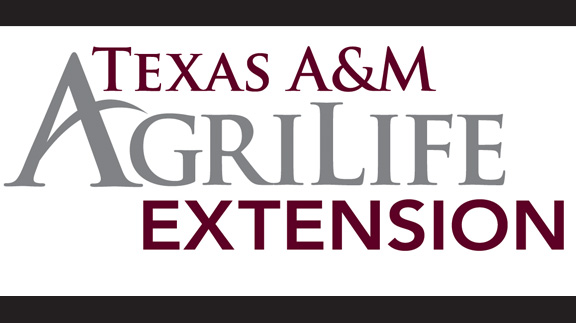Farm & Ranch
[AgriLife Today] Cattle, wheat pricing highlight July 26 conference in Wichita Falls

By: Kay Ledbetter
Writer: Kay Ledbetter, 806-677-5608, [email protected]
Contacts: Stan Bevers, 940-552-9941, [email protected]
Marty New, 580-255-0546, [email protected]
WICHITA FALLS – The Cattle Trails Wheat and Stocker Cattle Conference July 26 will cover how producers can meet pricing challenges in 2016 and prepare for 2017.
The conference, sponsored by the Texas A&M AgriLife Extension Service and the Oklahoma Cooperative Extension Service, will be from 8 a.m. to 3 p.m. at the MPEC Event Center, 1000 Fifth St., Wichita Falls.
Registration is $25 per person and includes educational materials, a noon meal and refreshments.
The information will be directed at producers in Southwestern Oklahoma and the North and Rolling Plains regions of Texas, said Stan Bevers, AgriLife Extension agricultural economist at Vernon.
Bevers said important changes are coming to the way producers manage their cattle due to the Veterinary Feed Directive regulation from the Food and Drug Administration.
“This regulation becomes effective January 2017 and will require the producer to have a valid veterinarian-client-patient relationship,” he said. “If a producer does not have a veterinarian, now is the time to begin finding one. Stocker cattle that will be purchased this fall could be covered under this regulation.”
The afternoon portion of the conference will focus on the specifics of the Veterinary Feed Directive and how a producer’s operation will change due to it.
Producers are encouraged to preregister by contacting their local AgriLife Extension county agent, their Oklahoma Cooperative Extension county educator or Allison Ha at the Texas A&M AgriLife Research and Extension Center near Vernon at 940-552-9941, ext. 225 or [email protected].
Speakers and their topics will include:
– Wheat Variety Update for the Southern Great Plains, Dr. Emi Kimura, AgriLife Extension agronomist, Vernon.
– Wheat and Cattle Market Outlooks: What’s Working and What’s Not, Bevers.
– Balancing the Scales: Efficiency, Profitability, Technology, Consumerism and the
Environment, Dr. Chris Richards, Oklahoma State Extension and research beef cattle nutrition specialist, Stillwater, Oklahoma.
– An Overview of the Veterinary Feed Directive: Facts and Fiction, Dr. Tom Hairgrove, AgriLife Extension program coordinator for livestock and food animal systems, College Station.
– Living with the Veterinary Feed Directive: How Will My Cattle Operation Change?, Dr. Ron Gill, AgriLife Extension livestock specialist, College Station.
Industry sponsors will have products on display during the event.
For more information, go to http://agrisk.tamu.edu.
-30-
Find more stories, photos, videos and audio at http://today.agrilife.org
Farm & Ranch
Acorn Toxicity

By Barry Whitworth, DVM, MPH
With the prolonged drought, most pastures in Oklahoma end up in poor condition. With the lack of available forage, animals may go in search of alternative foods.
If oak trees are in the pastures, acorns may be a favorite meal for some livestock in the fall. This may result in oak poisoning.
Oak leaves, twigs, buds, and acorns may be toxic to some animals when consumed.
To read more, pick up a copy of the November edition of North Texas Farm & Ranch magazine, available digitally and in print. To subscribe by mail, call 940-872-5922.

Farm & Ranch
Silver Bluestems

By: Tony Dean
There are a handful of grasses on North Texas grazing lands ranchers need to know, not because they are highly desirable, but rather because they are not of much value. I call them “decom” plants, which is am acronym for “Don’t Ever Count On Me.” Silver bluestem is a “decom” grass.
Silver bluestem is a perennial which grows in all areas of Texas. It can survive in almost all soil types, and in full sun conditions or in semi shade. It grows up to three feet tall and is easily recognized with the presence of the white fuzzy seed head. Also, one of the identifying characteristics of Silver bluestem is a bend in the stems at each node, causing the plants to take on a rounded shape as they mature.
To read more, pick up a copy of the November edition of North Texas Farm & Ranch magazine, available digitally and in print. To subscribe by mail, call 940-872-5922.

Farm & Ranch
Meanwhile Back At The Ranch

By: Rayford Pullen
Fall is here which means winter is closing in on us and before we officially get into winter, we need to make sure our factories are either producing or will be producing in a few months.
We have been pregnancy testing our cows this fall and if they are not bred or nursing a calf, we are bidding them adios. With annual costs somewhere between $900.00 and $1,000.00 per cow, those cows not producing a live weaned calf are costing us quite a bit.
To read more, pick up a copy of the November edition of North Texas Farm & Ranch magazine, available digitally and in print. To subscribe by mail, call 940-872-5922.
-

 Country Lifestyles2 years ago
Country Lifestyles2 years agoScott & Stacey Schumacher: A Growth Mindset
-

 Country Lifestyles8 years ago
Country Lifestyles8 years agoStyle Your Profile – What your style cowboy hat says about you and new trends in 2017
-

 HOME8 years ago
HOME8 years agoGrazing North Texas – Wilman Lovegrass
-

 Equine1 year ago
Equine1 year agoThe Will to Win
-

 Country Lifestyles5 years ago
Country Lifestyles5 years agoAmber Crawford, Breakaway Roper
-

 Outdoor9 years ago
Outdoor9 years agoButtercup or Primrose?
-

 Country Lifestyles8 years ago
Country Lifestyles8 years agoJune 2016 Profile – The man behind the mic: Bob Tallman
-

 Country Lifestyles8 years ago
Country Lifestyles8 years agoDecember 2016 Profile, Rusty Riddle – The Riddle Way




